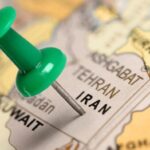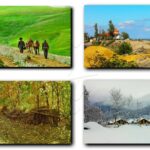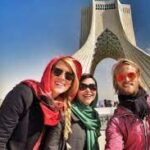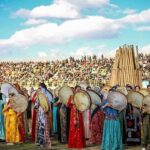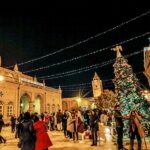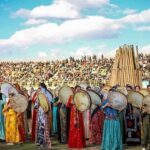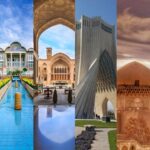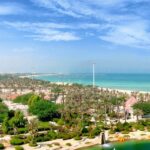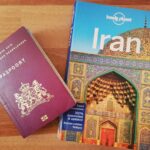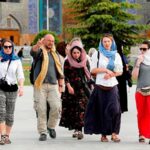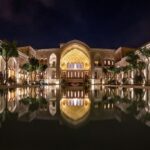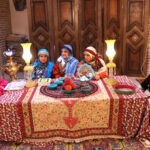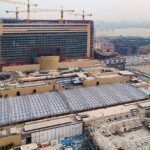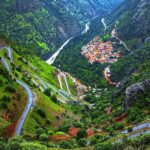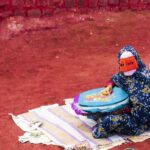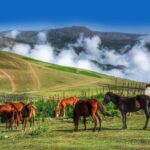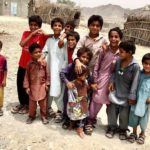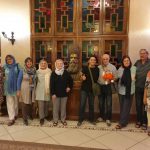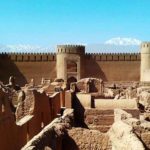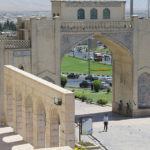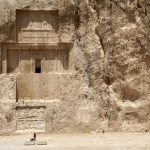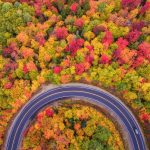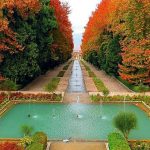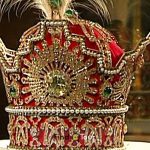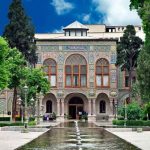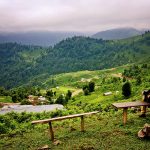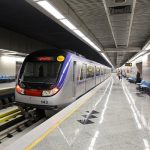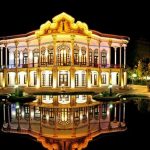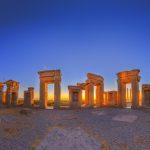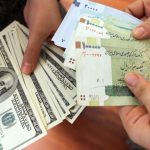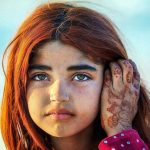Ramadan in Iran
Ramadan in Iran, also takes about 1 month. Also Traveling to Iran in these days, having no problem for tourists. Irandestination prepare all services as the best. To know more about this month you can read the below article.
Islam is the formal religion of Iran. During the month of Ramadan (which starts on May 17, 2018 to July June 15, 2018), Muslims fast during the day, say prayers several times and then break their fast with a special evening meal called Iftar. In this article, you will first learn some points about Ramadan and its general rules and then get some information about travelling during Ramadan and its dos and do not.
Ramadan usually lasts for around 28 days depending on the moon. Fasting is obligatory for Muslims, but there are some exceptions:
If someone has an illness, is pregnant or physically weak because of medical reasons; and
If someone is a Traveler! In which case, both eating and drinking is allowed. If they’re away from home for more than 10 days, or a certain amount of kilometers, at least 40 kilometers, to be considered as a traveler, then they’re allowed to eat.
Muslims avoid consuming any food, drinking liquids and smoking from sunrise to sunset during days in Ramadan. They do so to empathize with the poor and the needy; and learn to appreciate God’s blessings in their lives. The followings are some ceremonies and occasions Iranians have during Ramadan.
Ramadan in Iran: Ceremonies and Traditions in Ramadan
Sharing food with the poor, inviting people for Iftar (the food to break the fast with) at nights, charity activities, and complete reading of the whole Quran during this month are some of the things mostly done during Ramadan.
Qadr nights
Muslims believe the holey Quran was revealed to Prophet Muhammad by God on 19th, 21st or 23rd of Ramadan. During these three nights many people gather in mosques or in their homes, staying awake the whole night reading the Quran and saying special prayers. You can visit some mosques to see this ceremony. You probably like that very much, because it is once in a year in Iran.
As the Muslims believe that Ali (The first Imam of Shia Islam) has been killed on 21st of Ramadan, there is also a especial grieving ceremony in mosques on that night dedicated to Imam Ali.
Pay attention that during these days (19th to 23rd of Ramadan- which is June 4 to June 8 in 2018) some places like shopping centers might be closed. The whole period is kind of considered as a holiday by people, though only 12th of Ramadan is officially called a holiday. If you’re planning for travelling to Iran in Ramadan, consider this point as well.
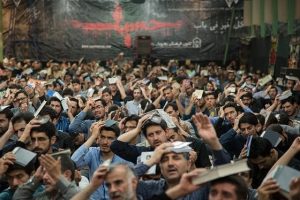
Ghadr Night in Ramadan
Eyd-e-Fetr or Fitr
The last day of Ramadan is a holy day call “Eyd-e-Fetr” which is one of Islamic eves in a year. Muslims must not fast on this day. In the morning, there is special prayer most of Muslims attend in mosques and in open places, under the sky. It usually starts at 7-8 o’clock AM. You can visit this ceremony if interested. The day after Eyd-e-fetr is also a national holiday in Iran. So there are 2 successive days as holidays.

Eid-e Fetr in Ramadan
Qods day’s rally
The last Friday of Ramadan call Qods day in Iran. On this day some people attend a rally in support of Palestine in the main streets. You might have seen it covered in western media and you might be interested to see it for yourself.
What you read was a summary of Ramadan, but now we want to see what you should consider while travelling to Iran during Ramadan. Actually, Travelling to Iran during Ramadan is nothing to worry about. If you consider the following tips you will feel more relaxed and less “Hungry” on you trip to Iran.
Ramadan in Iran: Where to find Meals during Ramadan
Finding public open restaurants during Ramadan is often difficult; This is because Ramadan affects business during daylight hours when locals observe Ramadan in Iran. But the followings are usually open during Ramadan:
a. Road stops on the highways are open for travelers during Ramadan;
b. Restaurants in city center hotels are open for Iran visitors during Ramadan;
c. General grocery stores and shops are open and you can buy fruits, snacks, drinks or whatever you like throughout the day.
Ramadan in Iran: Try to Be Considerate around Ramadan
Avoid eating in front of Iranians while they are fasting during Ramadan, at least where possible. You probably agree this can be painful to watch and smell food eaten by someone when you’re hungry and even offensive in some regions of Iran.
But don’t worry, You allow to eat, just eat somewhere quiet and not crowd or at least in obvious tourist areas.
Ramadan in Iran: Pros and cons of travelling during Ramadan
If you are very determined and willing to try some restaurants in Iran, some of them may be close during Ramadan. However most of the restaurants and eating places open up after sunset. Just some restaurants are old Bazaars may be close during Ramadan, because they just serve food during noon.
Also In 2018, as Ramadan is during spring, the weather is not that hot and you can tolerate the heat during the day.
The good thing about travelling during Ramadan is that Iranian people get out in the streets after sunset and Iftar, so the cities are so lively and lovely at nights. You can enjoy great eating places and Cafe’s throughout the night.
The other good thing is that local Iranians don’t often travel during Ramadan so it’s somehow a low season here for Iranians themselves, but for tourists from other countries it can be a great chance because the touristic places will be less crowded. You can also get cheaper accommodation.
All about Traditional Food of Ramadan in Iran
During Ramadan from sunset to sunrise, i.e. during nights you can eat as much as you like and anywhere you like. Every restaurant, food stand and household will have food ready after sunset.
Iranians usually break their fast with some traditional Persian foods shortly after sunset, specially with Halim, which is a sort of sweet porridge with wheat and meat. Then later at night they have a proper dinner.

Halim in Ramadan
There are two major meals in each day during Ramadan:
1. Iftar (break the fast) – This often occurs after sunset. Iranians have fresh bread, local halim (Iranian porridge), and sometimes Āsh for their Iftar; and
2. Sahari/Sahūr (supper) – During Sahari Iranians eat a full meal, drink lots of water and serve tea. Also Iranian kebabs, salads, sweets and fresh vegetables may be eaten for Sahari. However in effect anything can be served during Ramadan depending on what you like and where you are.

Try Iranian famous “Kebab”.
A very nice Iranian tradition during Ramadan is Nazri (votive/offering), by which people prepare food to feed the poor and homeless and anyone they know around themselves. This tradition derived from Muslim’s vow to God to support the poor. If you visit the mosques you probably can get some food as Nazri.

Iftar in Ramadan
What to eat in Ramadan
If you’re travelling to Iran during Ramadan don’t miss out trying these special deserts:
Zoolbia Baamieh – You can find this super sweet candies only in Ramadan.
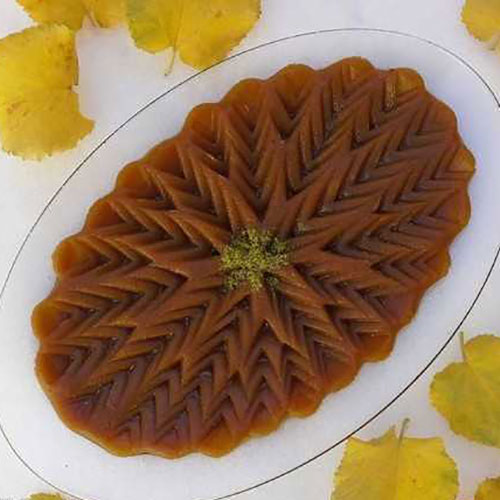
Halva – Made of flour, sugar, oil, saffron and rosewater.

Shol-e- zard – Made of Rice, sugar, saffron and rosewater.

zulbia and Bamie during Ramadan
What to do in Ramadan
If you interest in culture and getting to know people and Iranian traditions by face to face interaction, we highly recommend to visit Iran during Ramadan because you will see unique customs you cannot find any other time of the year. As mentioned before, you can visit mosques for the special ceremonies. You can also attend an Iftar Ceremony with Iranian families to see what they do. You will definitely get how hospitable Iranians are, because they love having guests.
All in all, you will have unique experiences by traveling to Iran in Ramadan.
You can simply book one of our tour packages to explore Iran during Ramadan or any other time of a year Iran Tour.

























